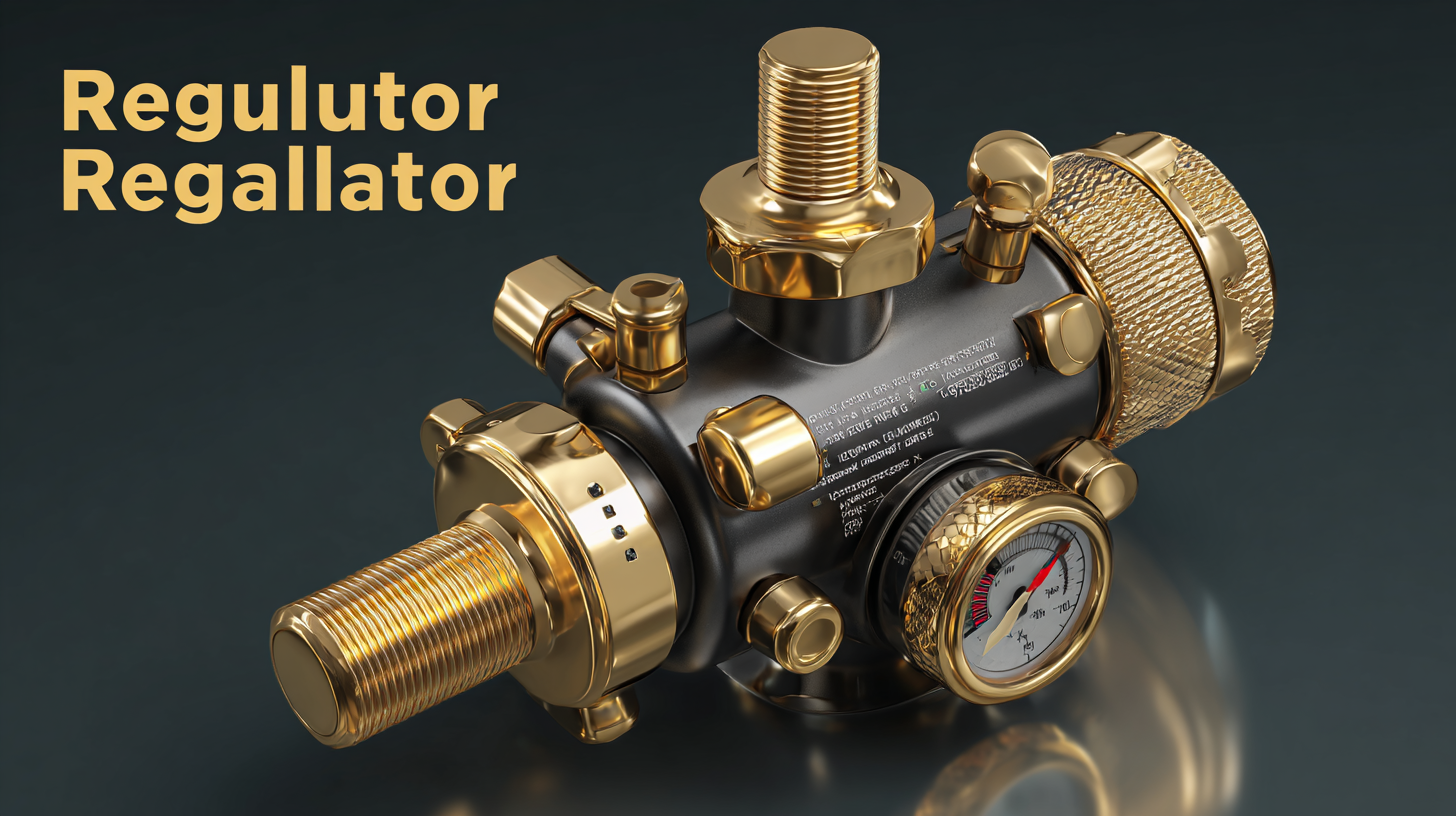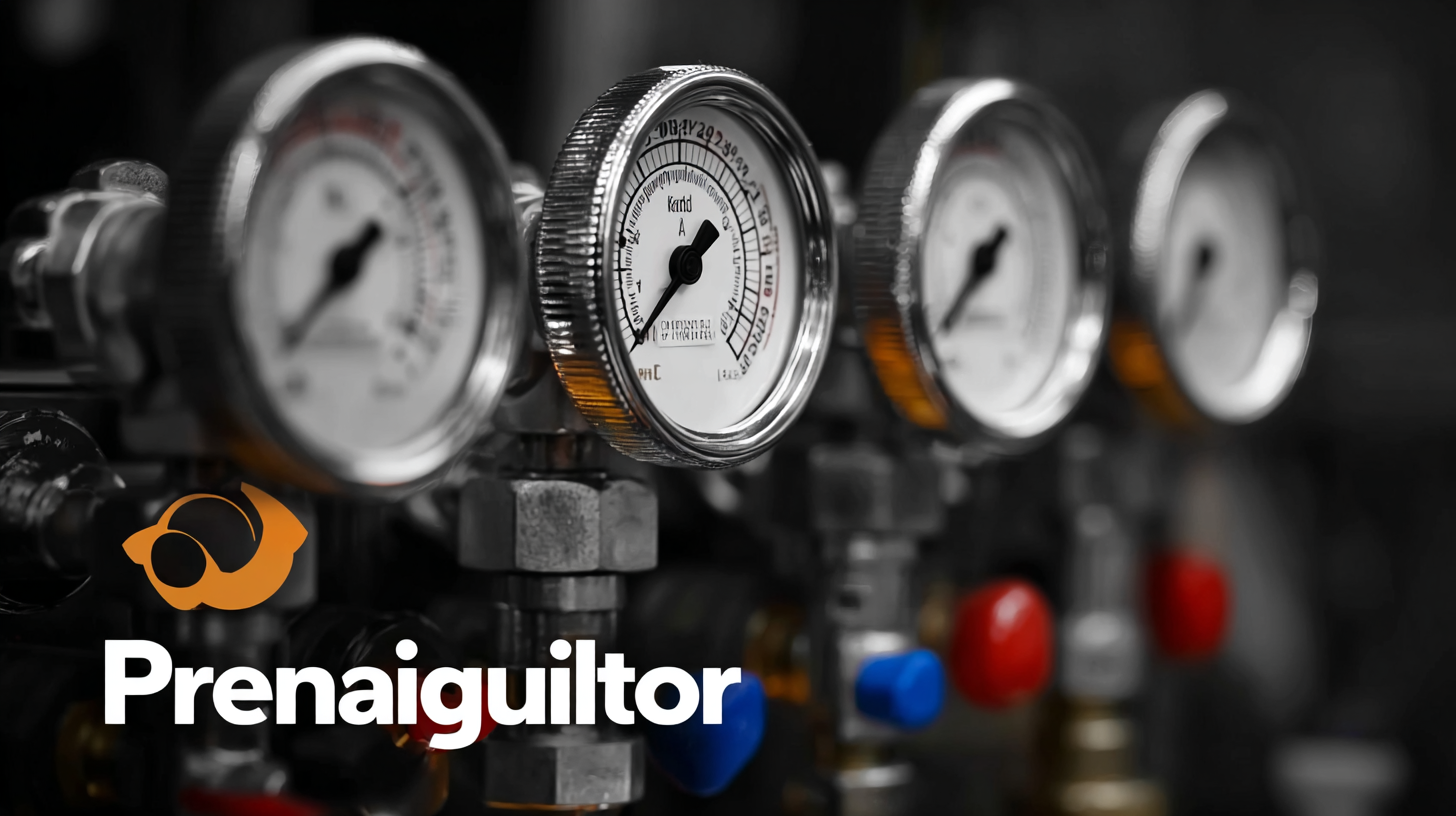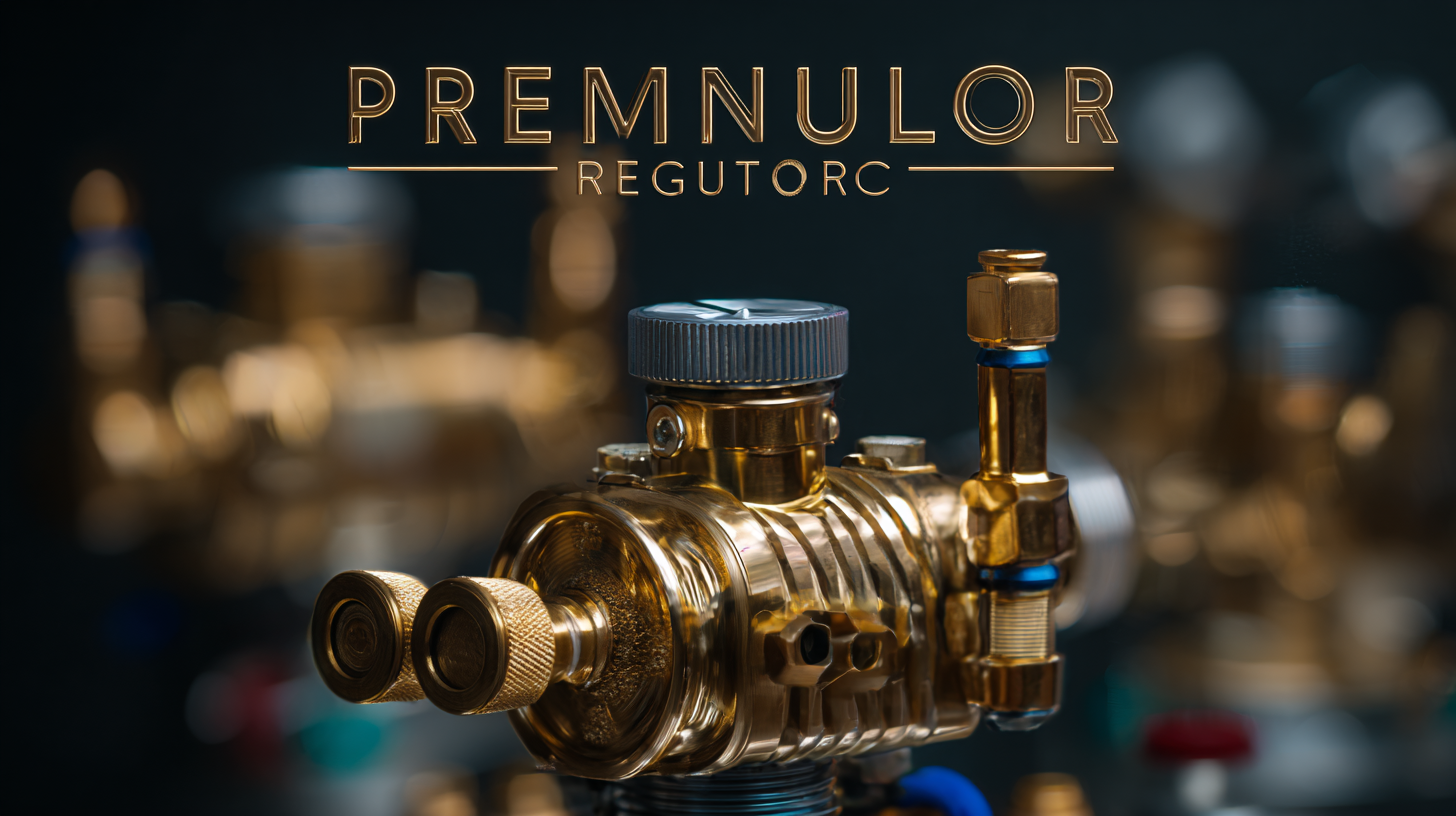Mastering the Best Pneumatic Regulator Understanding Specifications and Performance Metrics in Depth
In the rapidly advancing landscape of industrial technology, mastering the intricacies of a Pneumatic Regulator has become essential for optimizing performance and ensuring efficiency. As we look towards the industry dynamics of 2025, it is crucial to delve deep into the specifications and performance metrics that define these vital components of pneumatic systems. Understanding the operational capabilities, pressure settings, and flow characteristics of Pneumatic Regulators not only enhances equipment reliability but also plays a pivotal role in maintaining safety standards and energy efficiency.

This blog will explore the key features, latest trends, and best practices for selecting and utilizing Pneumatic Regulators, ensuring that professionals are well-equipped to navigate the challenges and opportunities that lie ahead in the evolving industrial landscape.
Understanding Pneumatic Regulators: Key Technical Specifications That Matter
Pneumatic regulators play a critical role in ensuring the efficiency and reliability of compressed air systems in various industrial applications. Understanding the key technical specifications of these devices is essential for selecting the right regulator to optimize performance. One of the most significant specifications is the pressure range. According to a report by the Compressed Air and Gas Institute, most pneumatic regulators operate within a pressure range of 0 to 100 psi, but high-performance models can handle ranges exceeding 200 psi, providing flexibility in various operating environments.
Another important metric is the flow rate, which is often measured in SCFM (Standard Cubic Feet per Minute). The same report indicates that optimal flow rates for typical pneumatic applications range from 10 to 50 SCFM, allowing users to accommodate different air consumption needs without pressure drops. Additionally, factors such as operating temperature and response time are crucial for ensuring that regulators maintain stable pressure under varying conditions. A comprehensive understanding of these specifications not only enhances system performance but also prolongs equipment life, minimizing downtime and operational costs.
Mastering Pneumatic Regulators: Performance Metrics
This bar chart illustrates the key specifications of pneumatic regulators, highlighting their pressure range, flow rate, temperature range, and port size. Understanding these metrics is essential for selecting the right regulator for various applications.
Performance Metrics: How to Evaluate the Efficiency of Pneumatic Regulators
When it comes to evaluating the efficiency of pneumatic regulators, performance metrics play a crucial role in determining their effectiveness and suitability for specific applications. Just like in other industries where performance indicators reflect operational success—such as the Revenue Passenger Kilometers (RPKs) and Available Seat Kilometers (ASKs) in aviation—understanding the metrics associated with pneumatic regulators can provide valuable insights for users. Key performance metrics for regulators may include pressure stability, flow capacity, and response time. These indicators not only help in assessing the current performance but also guide informed decisions for improvements or upgrades.
Incorporating systematic evaluation methods can enhance the selection process for pneumatic regulators. Recent advances in sensor technology and real-time data collection allow for more precise monitoring of regulator performance, akin to how energy efficiency metrics are utilized in residential heat pumps. By employing robust methodologies to gather and analyze performance data, businesses can ensure they are utilizing the most efficient and effective pneumatic regulators tailored to their operational needs, thereby maximizing productivity and minimizing waste. This analytical approach enables engineers and decision-makers to make data-backed choices that align with their objectives for efficiency and performance.
Common Applications of Pneumatic Regulators in Industrial Settings
Pneumatic regulators play a crucial role in various industrial applications, ensuring the precise control of pressure in pneumatic systems. These devices are fundamental in sectors such as manufacturing, packaging, and automation, where maintaining optimal pressure levels directly impacts efficiency and productivity. In environments like microfluidic cell culture, a new wave of technology has emerged, highlighted by the development of miniaturized pressure regulators. These advanced 3D printed devices provide robust flow control capabilities, which are essential for delicate applications demanding precise pressure management.

Moreover, the significance of pneumatic regulators extends beyond mere function; their role is becoming increasingly critical in ensuring compliance with air quality standards. Industries are under scrutiny for their emissions, especially in areas heavily populated by vulnerable communities. Regulators must balance operational needs with environmental responsibilities, particularly as cities face elevated pollution risks. Enhanced regulations around pneumatic systems could contribute to reducing emissions and safeguarding air quality, making pneumatic regulators not only vital for operational efficiency but also for promoting healthier industrial practices.
Industry Standards: Regulatory Compliance for Pneumatic Systems
 When it comes to pneumatic systems, adhering to
industry standards and regulatory compliance is paramount for ensuring safety and efficiency.
These standards are designed to govern the performance and reliability of pneumatic regulators, which are
critical components in controlling pressure and maintaining the optimal functioning of various pneumatic tools and machinery.
Organizations such as the International Organization for Standardization (ISO) and the
American National Standards Institute (ANSI) have developed specific guidelines that manufacturers and users must follow,
making it essential to stay informed about these regulations.
When it comes to pneumatic systems, adhering to
industry standards and regulatory compliance is paramount for ensuring safety and efficiency.
These standards are designed to govern the performance and reliability of pneumatic regulators, which are
critical components in controlling pressure and maintaining the optimal functioning of various pneumatic tools and machinery.
Organizations such as the International Organization for Standardization (ISO) and the
American National Standards Institute (ANSI) have developed specific guidelines that manufacturers and users must follow,
making it essential to stay informed about these regulations.
Additionally, understanding the specifications of pneumatic regulators in the context of regulatory compliance can greatly affect operational performance. For instance, pressure rating, temperature limits, and flow capacity are crucial factors that must align with the prescribed industry standards. Non-compliance can lead to inefficiencies, safety hazards, and even costly downtimes. Therefore, investing time in mastering these specifications not only enhances the performance metrics of pneumatic systems but also ensures that they operate within legal and safety requirements, promoting a culture of accountability and excellence in engineering practices.
Comparative Analysis: Traditional vs. Modern Pneumatic Regulators性能指标
In the realm of pneumatic regulators, understanding the differences between traditional and modern designs is essential for optimizing performance in various applications. Traditional pneumatic regulators have long been relied upon for their straightforward mechanics and reliability. Typically, they utilize a simple diaphragm mechanism, allowing for predictable pressure regulation suitable for standard tasks. However, these regulators can be limited in terms of responsiveness and precision, particularly in dynamic environments where pressure fluctuations occur frequently.
On the other hand, modern pneumatic regulators incorporate advanced technologies that enhance their performance metrics significantly. With features such as digital pressure monitoring, improved materials, and adaptive control systems, these regulators offer superior accuracy and faster response times. The integration of smart technology allows for real-time adjustments based on system demands, which is critical in high-stakes environments like manufacturing and aerospace. This comparative analysis highlights the evolution of pneumatic regulation, demonstrating how modern solutions provide enhanced efficiency and flexibility, catering to the increasing complexity of industrial applications.
Mastering the Best Pneumatic Regulator: Understanding Specifications and Performance Metrics in Depth
| Specification | Traditional Pneumatic Regulators | Modern Pneumatic Regulators |
|---|---|---|
| Pressure Range | 0 to 100 psi | 0 to 150 psi |
| Flow Rate | 10 scfm | 20 scfm |
| Input Pressure | 50 to 150 psi | 30 to 200 psi |
| Materials Used | Aluminum, Brass | Composite, Stainless Steel |
| Temperature Range | -20°C to 80°C | -40°C to 100°C |
| Accuracy | ±3% FS | ±1% FS |
| Adjustment Method | Manual Knob | Automatic Control with Digital Display |
| Weight | 1.5 kg | 1.2 kg |
| Typical Applications | General Industrial | Precision Automation |
| Cost | $50 - $100 | $120 - $250 |
